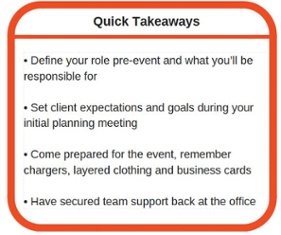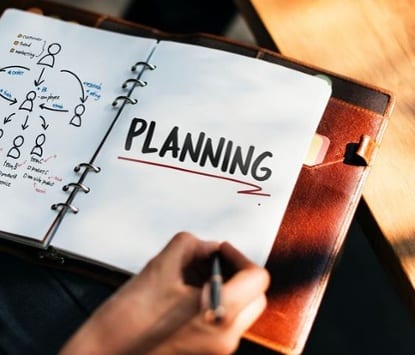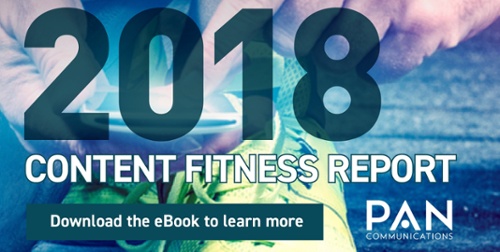 With the Forbes Under 30 Summit just one week away, event season is almost upon us. From Advertising Week in New York, to DMEXCO in Germany, and countless others, now’s the time to make sure you are as prepared as possible for major industry events, no matter your clients level of participation.
With the Forbes Under 30 Summit just one week away, event season is almost upon us. From Advertising Week in New York, to DMEXCO in Germany, and countless others, now’s the time to make sure you are as prepared as possible for major industry events, no matter your clients level of participation.
From attending the event and making a major announcement on-site, to running social campaigns to leverage the increased volume of chatter, to trendjacking hot topics coming out of the event – even managing the entire event itself – we’ve experience it all! Here are some of our best practices and top tips, as we head into event season.
1. Defining Your Involvement in the Event
The first thing you need to understand before you even start planning is what your role will be. Does the client expect you to join them on-site to help facilitate media interviews? If so, will you be there throughout the entire event or only for select days? Are you expected to run social channels from the office? If that’s the case, will someone on the ground be sending you photos?
These are all critical questions for you to ask and further clarify so you can make sure you are being as impactful as possible. Beyond being strategic, you also need to have a deep understanding of your role from a logistics standing. Trust me, if you don’t realize you’re expected to attend CES until the last-minute, you will have a very difficult time booking a hotel room. Once you understand your role, you can move onto the next stage.
2. Understanding the Clients Goals
It’s challenging to be successful, if you don’t know what success looks like to your client. Take the time to speak to them about what their goals are for the specific event. They may be most interested in media interviews, which would change your strategies and tactics leading up to, and during, the event. Or, the primary reason they are attending could be lead generation, networking and to host sales meetings with potential customers. Schedule an initial planning meeting with your clients to understand what they are hoping to get out of the meeting, and from there you can develop the best plan of action to accomplish those goals.
3. Attending the Event
The questions I hear most when someone finds out they are expected to attend an event are always about what to pack, what to expect, and how to behave. Beyond the obvious (comfortable shoes, long days, professionally), there are a few tips and tricks I’ve discovered which make events far more successful – and even fun.
- Conferences are always cold – I don’t know why that’s the case, but it’s true. Pack a jacket or a sweater so you can stay comfortable throughout keynotes, walking the conference floor, and meeting with reporters.
- Food can be hard to find, or hard to find time to actually eat. Pack protein bars, trail mix and water just in case. It might not be an issue, but no one is at their best when they are hungry or dehydrated.
- Chargers, chargers, chargers. Bring one for your laptop, tablet, phone – whatever device you have on you. Even if you don’t need it, you never know when a desperate reporter or teammate will be scrambling to get a little extra juice.
- Bring far more business cards than you ever expect you will need. You will be handing them out like candy during Halloween. If you have time, get your client’s logo printed on a sticker you can add to your business card, so they don’t just remember you, but remember who you were there representing.
It’s likely that even if you are attending the event, the entire team won’t be on-site. In that case, make sure you have a plan laid out for what each person’s role is, and how you can best work together. If you are focused on media, make sure your teammate knows which reporters you are meeting with, and when, so they can monitor for coverage and flag in real-time. If you are there to run a social campaign, plan for your teammates to be monitoring overall social conversations around the event, what your competitors are saying, and if there are influencers actively posting so you can engage with them in a timely manner. By taking the time to determine roles and responsibilities for all involved, it will make the event run much smoother – especially when it’s not always easy to reach each other if one of you is running around at the event.
5. Communications at the Event
When people are being pulled in different directions at the conference – literally and figuratively – it’s critical to know the quickest and easiest way to reach one another. If you don’t have your client’s cell phone numbers already, now’s the time to make sure they are programmed into your phone. And not just your day-to-day contact, I suggest getting the numbers of everyone attending the event involved in your team and client. You never know when the CMO you had a briefing scheduled with might step away with a prospect, and the fastest way to track them down is through a sales associate. Regarding briefings, it’s vital to have reporters cell phone numbers as well. From last-minute reschedules, to moving locations, or just being unable to find each other at the conference, it’s far easier, quicker and more efficient to send a text than to email the reporter, and hope they are checking their inboxes.
 6. Post-Event Actions
6. Post-Event Actions
Just because the event is over, doesn’t mean your job is over too. Post-event actions are critical to the overall success of an event. Ensuring that coverage is published after a briefing took place on-site at the event, recapping major takeaways for additional media opportunities moving forward, and reviewing and sharing analytics based on your social campaign – are all incredibly important tasks you must tackle after the event. Make sure you dedicate the time to do all the necessary post-event work, depending on your goals. You worked hard to plan and strategize pre-event, you made sure everything ran smoothly during the event, now make sure the post-event work is as tight as everything else. All the work you do after the event wraps up is the key final touch for overall success.

If you’re interested in maximizing your client’s next trade show or event also check out, The Ultimate Trade Show Guide: 3 Steps to Increased Marketing ROI or let’s continue the conversation @PANcomm and @Ashley2h2o.



 6. Post-Event Actions
6. Post-Event Actions
